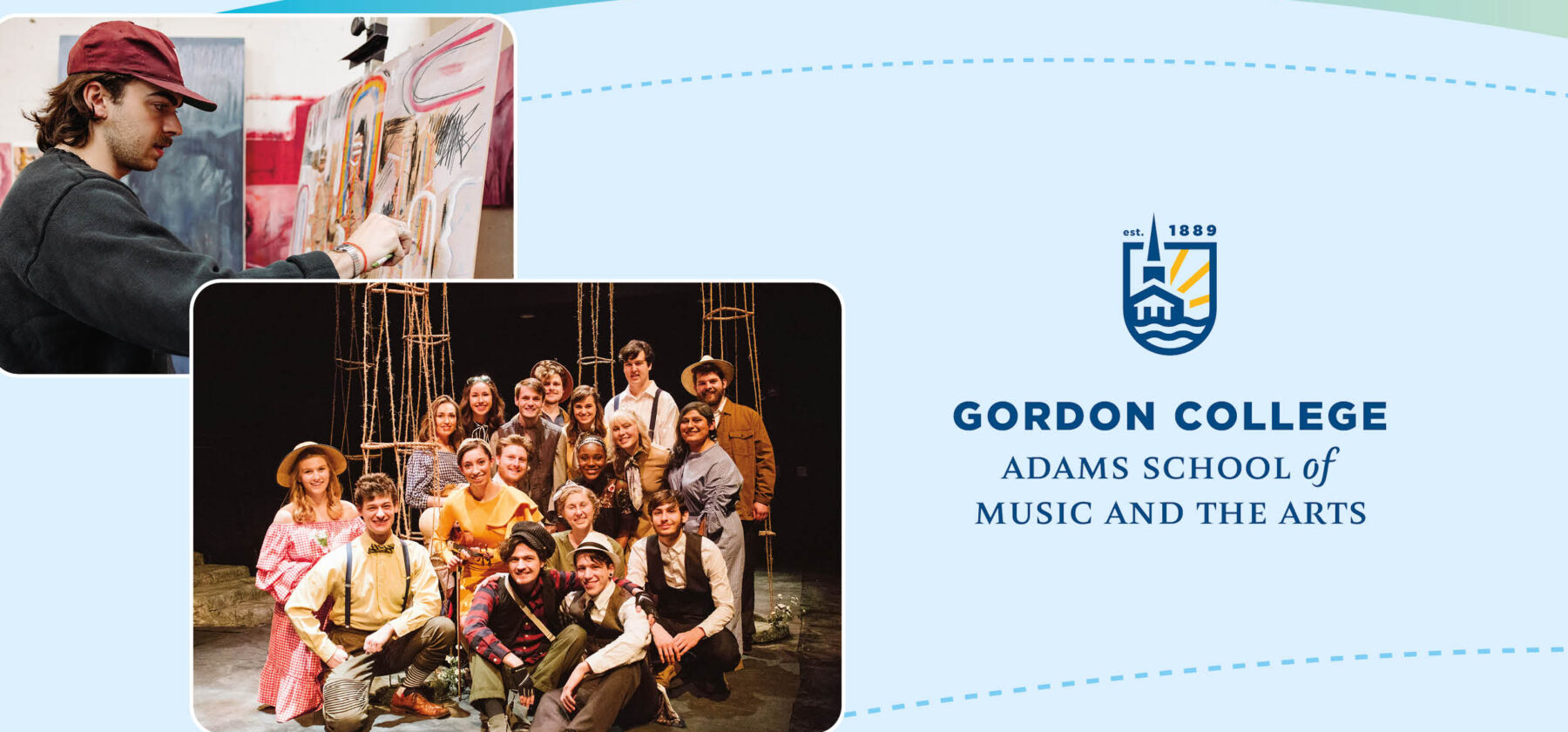Faithful Creativity in a Digital Age
A version of this article originally appeared in the fall 2024 issue of STILLPOINT magazine.
In celebration of the new Adams School of Music and the Arts, we sat down with some of the professors in the new school for their perspective on art, faith, and how those two are relevant in the face of our current times and technology.
Q: How is technology impacting the arts for better or for worse?
Kelly Foster (art): Though people are talking about the threat of generative AI to design fields such as graphic design, the ability of clients to get graphic work done without interacting with a designer has been around for a while. For instance, algorithms have replaced much of the human processing of digital images and clients can use web services that provide cheap, anonymous branding. None of these tools replace the thoughtful, specific, human interaction of a designer with a client that can generate truly new and meaningful design work.
Gerry Dolan (music): Speaking of tools, making music in a digital world is harder than people think. To work with video and audio at the same time for a three-minute performance could take 40-100 hours to make: recording it, editing it, getting the audio and video to match. In addition to the work, there’s the reality piece. During COVID, students in my remote conducting class would send perfect videos because they could rerecord and make it perfect. But in real life you have nerves. I think technology is putting us out of touch with our imperfect human nature.
Rachel Yoo (communication arts): We all know real life gets distorted on social media, too. It can be a tool to connect to a wider world—or it can make you stuck. In one of my studies, I look at the comments of certain YouTube channels, and how people interact with each other in the comments. As people share their reactions they interact with each other, with strangers. Those conversations can lead to authentic relationships. After all, we’ve never seen Jesus—we only know him through the Bible and the preaching of sermons. Mediated communications can be the same way.
Q: In an age of digital performances, virtual galleries and shows, why does in-person art matter?
Greg Deddo (art): Art and design is not an opt out/in thing—we interact with it all the time. Anything made by humans has some level of artistry to it. A life of stewardship requires thinking carefully and responsibly about our spaces and lives and how we care for them. Art matters because we’re embodied souls; those things go together. When you paint, sculpt, you’re using the stuff of the earth. Seeing it in person is a radically different experience—even if you can’t touch it, you can see it, feel it, understand how it’s put together. Beauty is meaningless unless it’s shared. Galleries let you talk, think, ponder, have a conversation, which is important for the completion of art.
Jess Modaff (music): The increase of digital awareness, livestreaming and sharing of music has become almost expected thanks to Covid, which is an opportunity. We livestream concerts so we can reach audiences and families outside our walls. But recording is making people desensitized to live performance, which is why we teach our students to be excellent performers live. There’s something about in-person that technology can’t replicate.
Chris Underation (communication arts): Jesus didn’t make it a habit to sit in one place and solve problems half a nation away. He solved the problems right in front of him. Because of our digital age, we can move in and out of a church and not connect with others. This affects how our faith forms, how tolerant we are, how often we listen to opposing views. Because of international journalism, we can be worried about something across the world when we’re in Massachusetts, but be unaware of what’s going on locally. Involving ourselves in our local communities, staying up to date on our town halls and local news…that’s how we can love our neighbors.
Q: Why is it important for Christians to be a part of the arts?
Sarita Kwok (music): We have a calling, being made in the image of God, to be creative and to be creators. We can all sing. We can all make music. We all create or are creative make art in some way. So, the arts are for all of us. God is honored by those of us who contribute in the arts, who glorify him through the very process of creating. The Adams School is a celebration of that. The pursuit of excellence in the arts can become an egocentric endeavor, but here at Gordon, we purposefully acknowledge the Source of our artistic gifts. We teach and mentor with Christ at the center and this re-orients us away from ourselves and back to our creator.
Norm Jones (theatre): Theater really is a place of ministry, not so much in what are the plays we’re going to do, but when you’re involved in a play, we’re called to be salt and light. Theater always deals with conflict. That can make people uncomfortable. For me as a theater professor of now 39 years, I’ve been really helping to baptize the imagination of Christians to see that theater is a gift from God, because we get to hear the voices of people who are unheard, and to listen to them carefully and to be able to respond, to help others see Jesus as divine and human.
 The Bell
The Bell